FormicidaeAnts Camponotus aurocinctus Camponotus consobrinus (Banded Sugar Ant) Camponotus inflatus (Honey Ant) Dolichoderus doriae (Dolly Ant) Leptomyrmex erythrocephalus (Red-headed Spider Ant) Myrmecia brevinoda (Nocturnal Bull Ant) Myrmecia nigrocincta (Jumping Jack Ant) Myrmecia pilosula (Jack Jumper Ant) Myrmecia pyriformis (Inch Ant) Myrmecia rubripes (Bullant) Notoncus spinisquamis Oecophylla smaragdina (Green Tree Ant) Rhytidoponera aspera Rhytidoponera metallica (Green-head Ant)
The Green Tree Ant (Oecophylla smaragdina) are a common species of ants in northern Australia. Known by a number of other common names including Green Ants and Green Weaver Ants, one of natures skilful builders, they are also considered to be an aggressive insect.
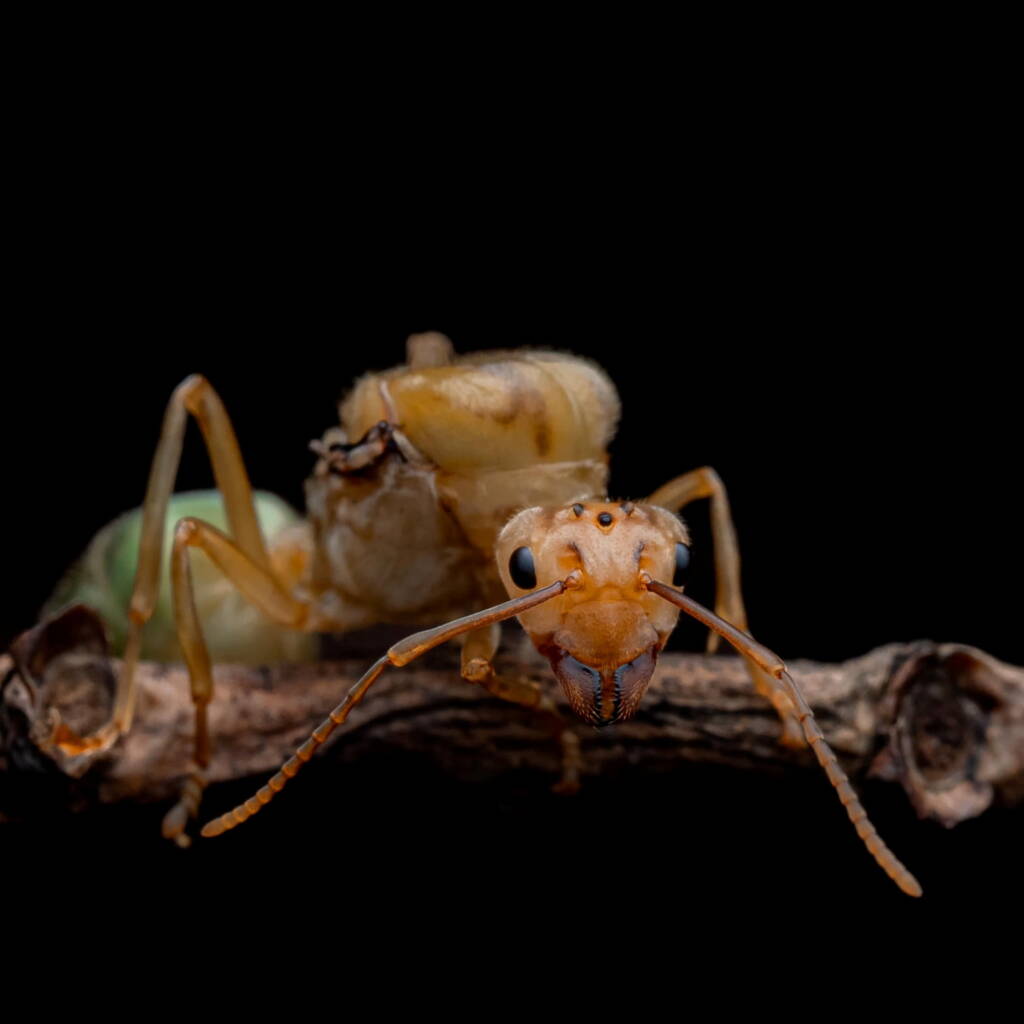
Weaver ants are obligately arboreal, that is they live in trees and are known for their unique nest building skills, where the workers of the colony construct nests by weaving together leaves using larval silk.2
The Green Weaver Ant colony consist of a queen and two distinct minor and major workers. The queen is about 20–25 mm in length. The minor worker are about 4-5 mm in length, whilst the major workers are 8-10 mm. It is the major workers that forage, defend and maintain the colony, whilst the minor workers tend to stay within the nests, where they care for the brood and “milk” scale insects at or near the nests.
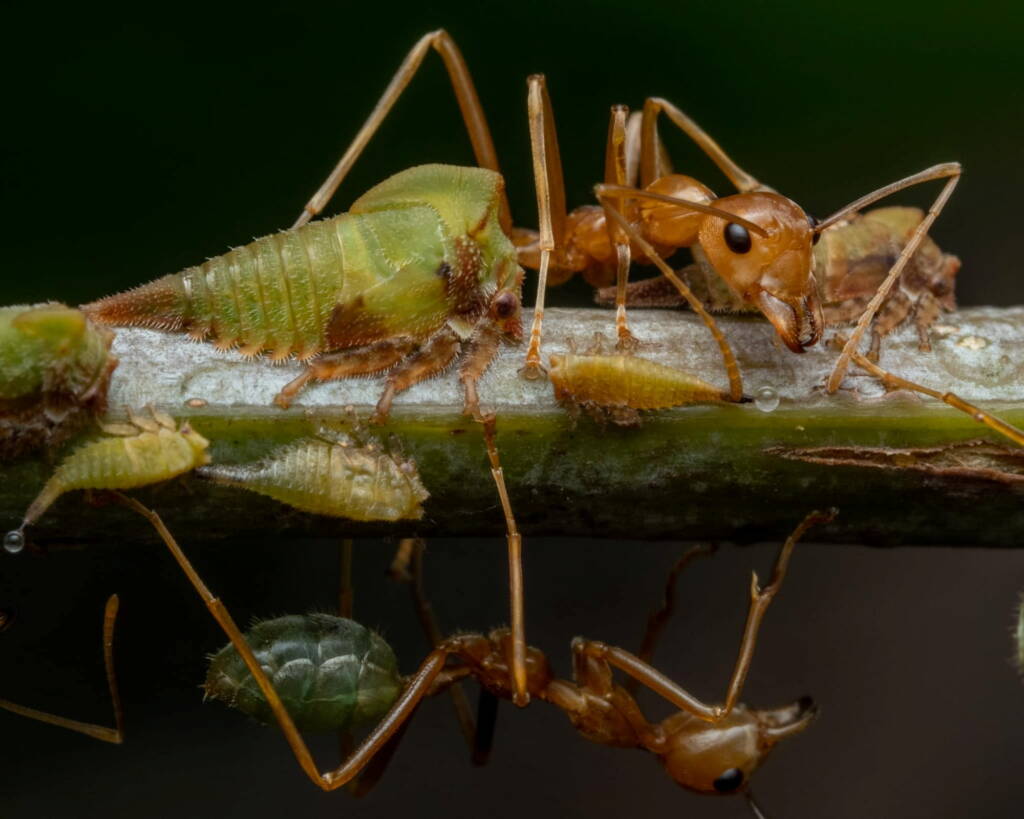
The Australian Green Weaver Ant (Oecophylla smaragdina) can vary in colour (depending on locality), from pale yellow, reddish, to yellow-brown. The abdomen (the gaster) is green.
The Green Weaver Ants are “squirters”. That is they do not have a sting. Instead, the green ant will grabs onto your skin with its six legs and then bite. It will then pull it’s tail end underneath itself and squirt formic acid into the bite wound. Hanging on, it will chew the skin to mix the acid into the flesh.
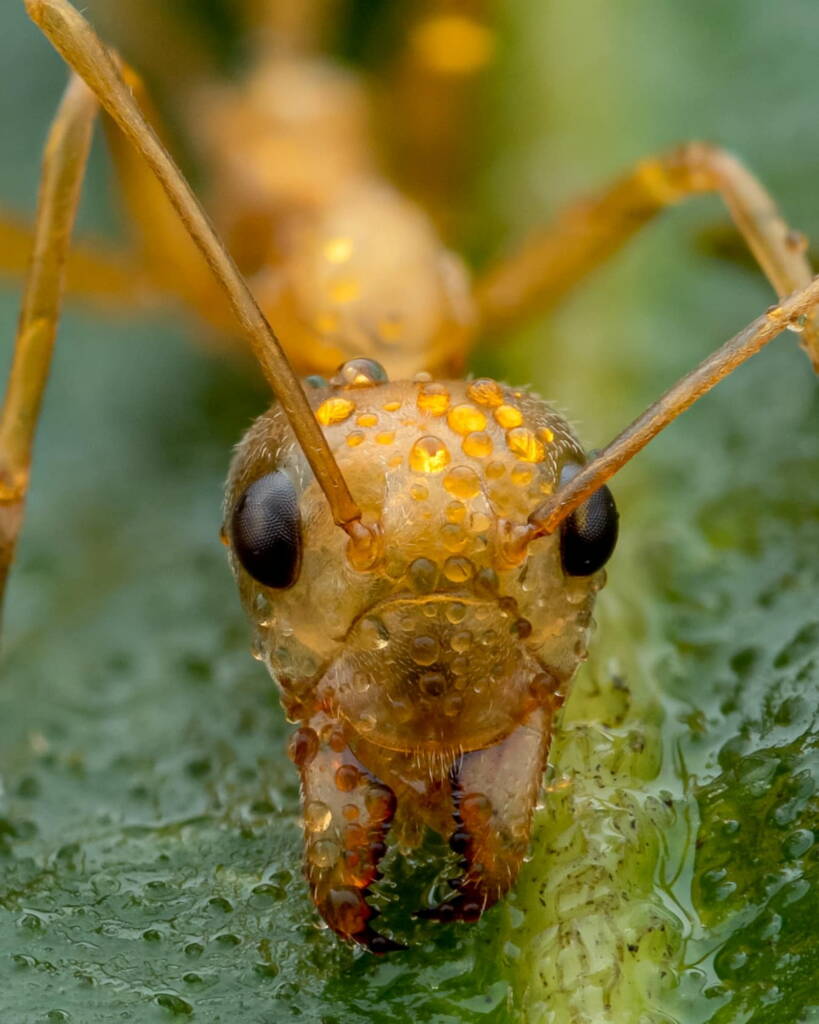
The colonies of the Green Weaver Ants can be extremely large, sometimes consisting of more than a hundred nests spanning numerous trees. There would easily be more than half a million workers in such large colonies. The Green Weaver Ants prey on small insects, and supplement their diet with carbohydrate-rich honeydew that is excreted by small insects (Hemiptera). Insects stand very little chance if caught by the Green Weaver Ants, as seen in some of the photographs presented here.
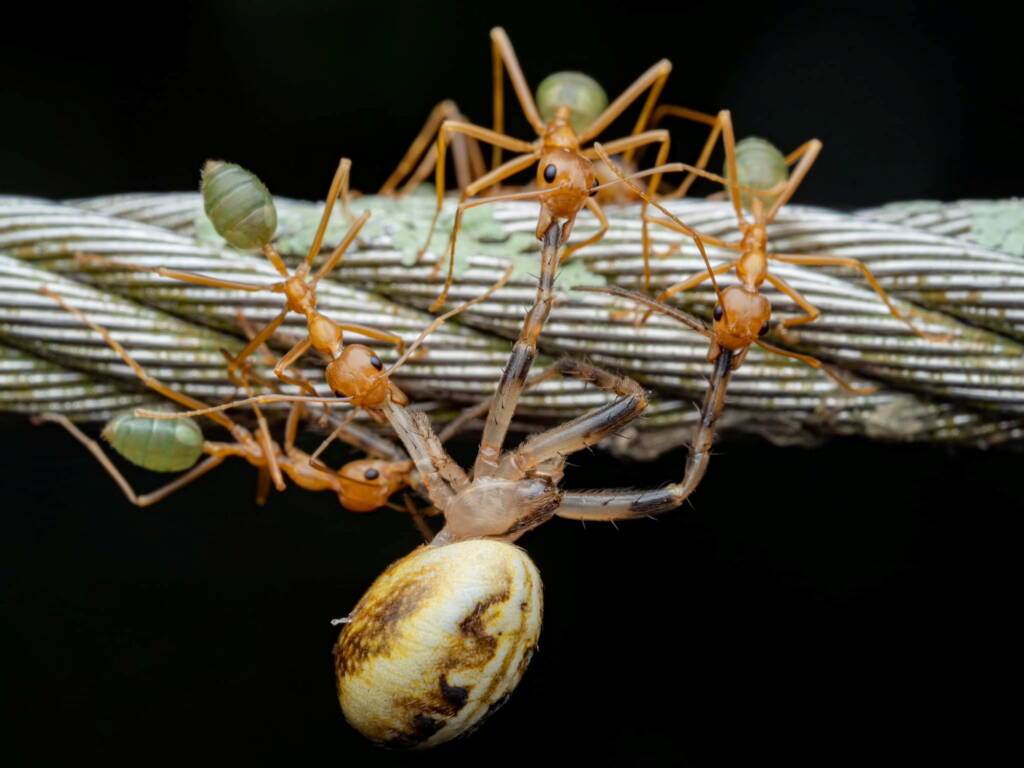
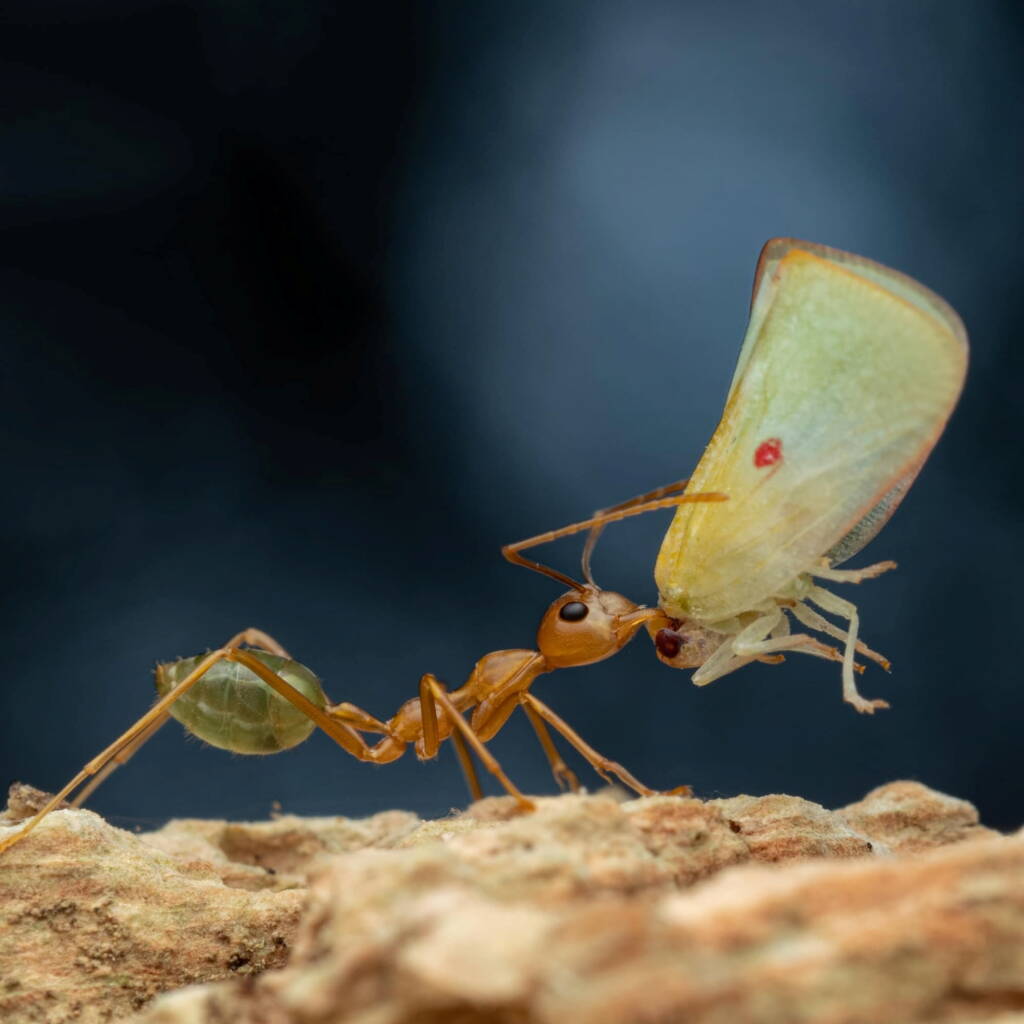
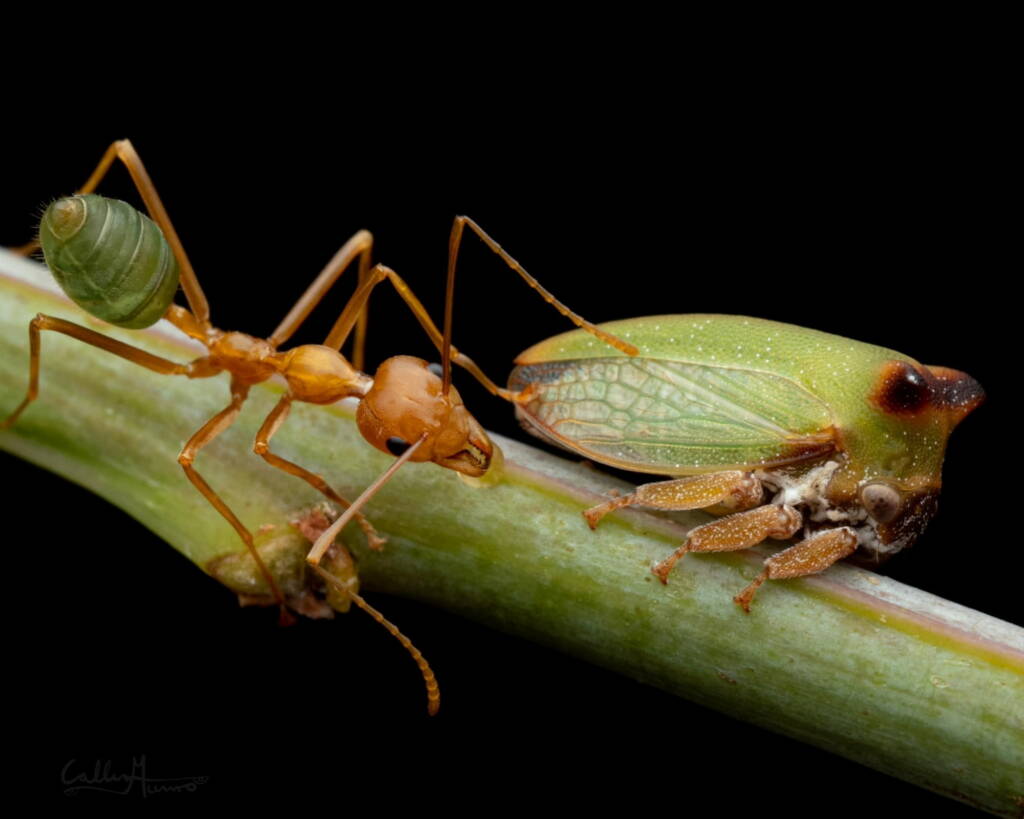
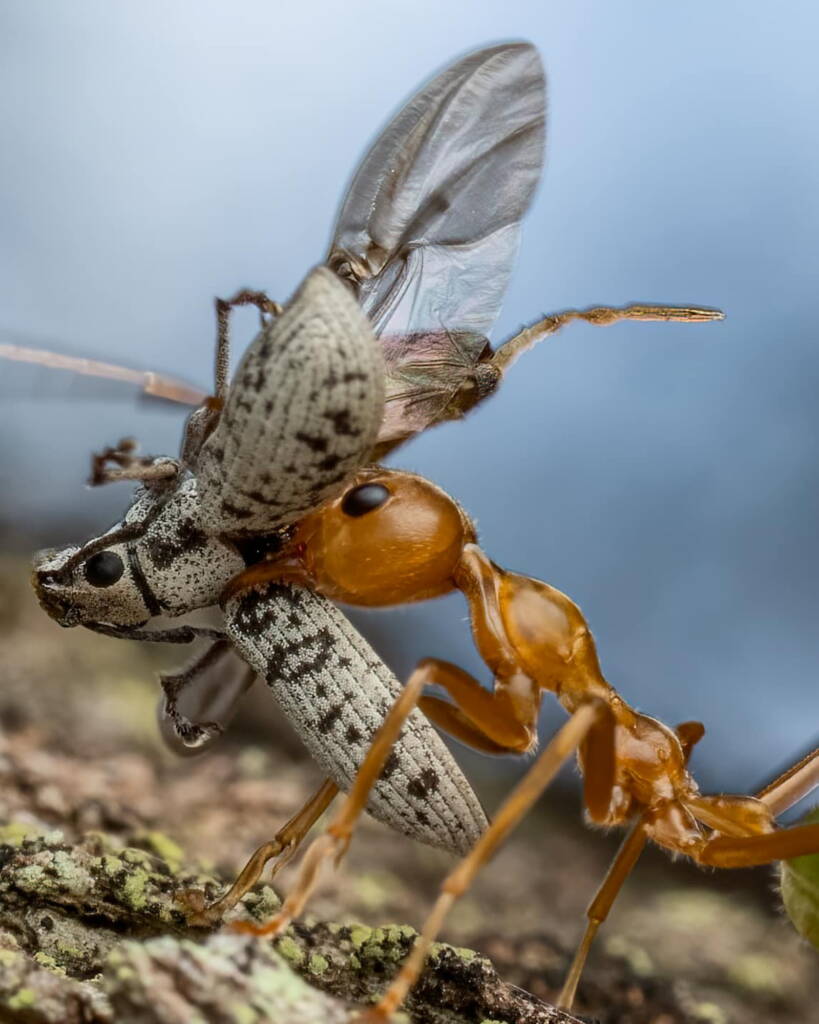
Bushfood, Aboriginal people eat the white larvae found inside the leafy nests. The larvae is said to have a lemon taste. Both ants and larvae were also pounded and mixed with water, producing a lime flavoured drink that is helps to relieve colds, headaches and sore throats.
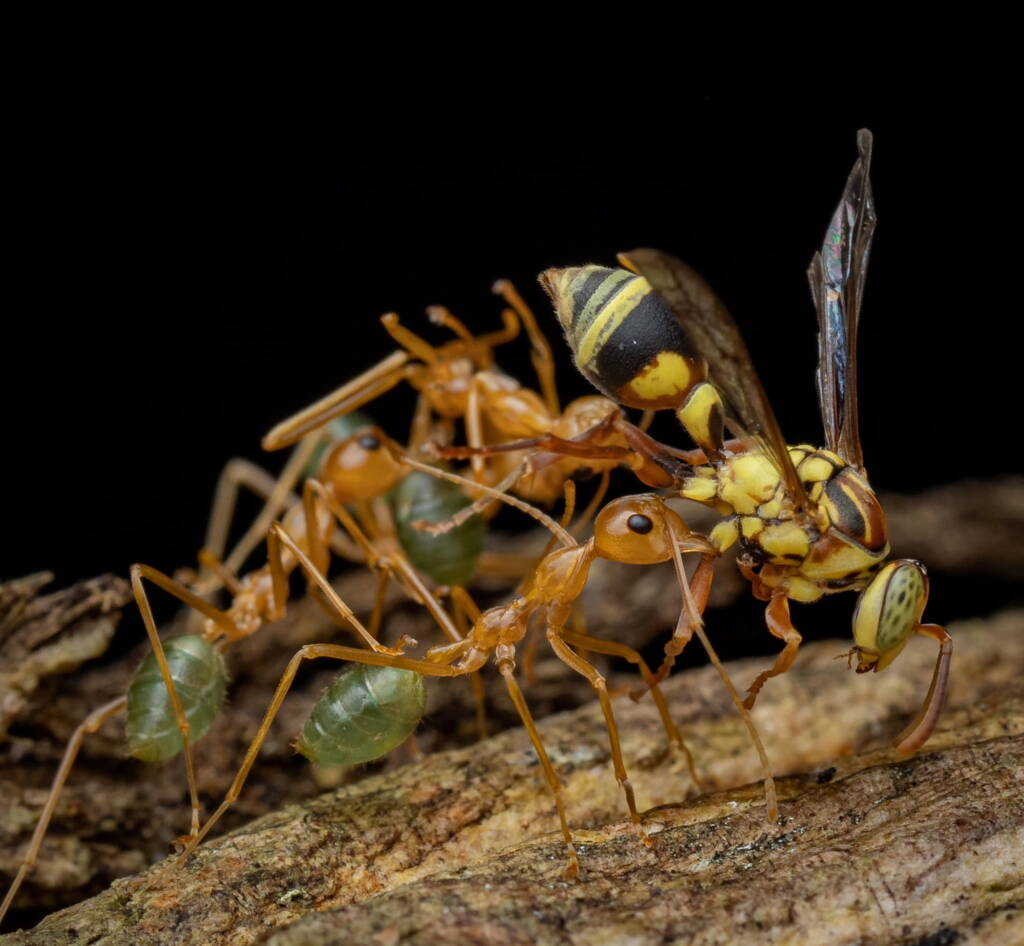
- Scientific classification
- Kingdom: Animalia
- Phylum: Arthropoda
- Subphylum: Hexapoda
- Class: Insecta
- Subclass: Pterygota
- Order: Hymenoptera
- Suborder: Apocrita
- Infraorder: Aculeata
- Superfamily: Formicoidea
- Family: Formicidae
- Subfamily: Formicinae
- Tribe: Oecophyllini
- Genus: Oecophylla
- Species: Oecophylla smaragdina
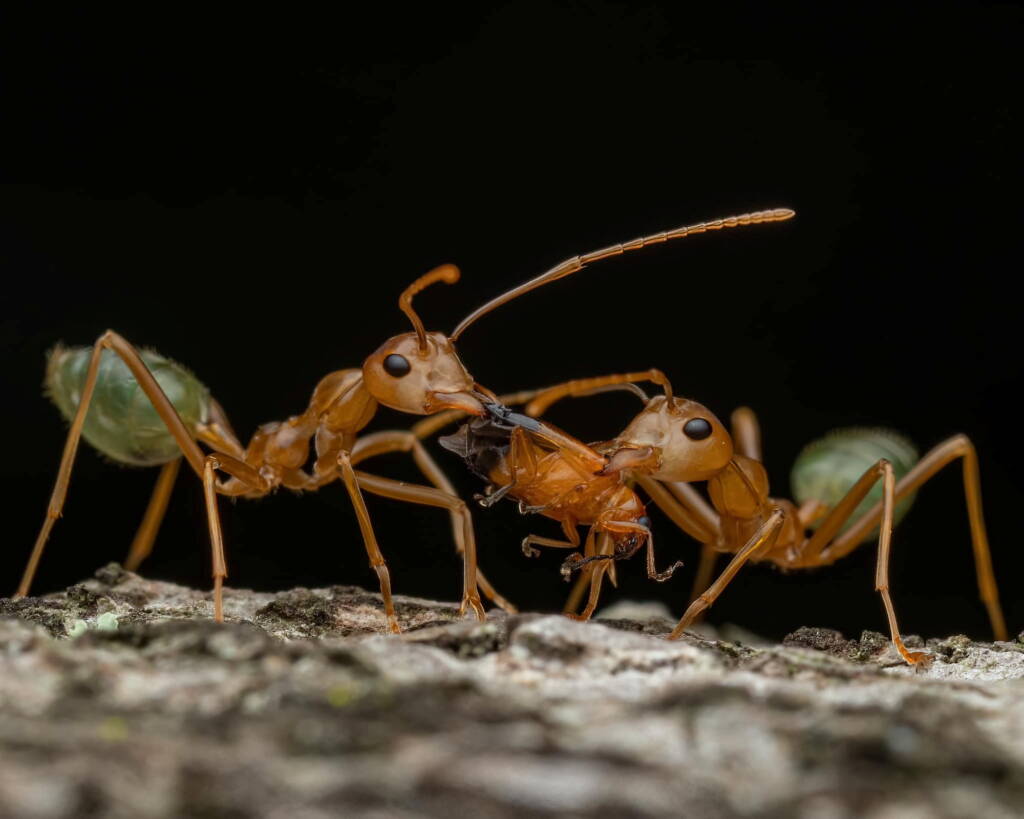
Footnote & References
- Photographs © Callum Munro
- Weaver ant, Wikipedia, https://en.wikipedia.org/wiki/Weaver_ant
- Green Tree Ant (Oecophylla smaragdina), iNaturalistAU, https://inaturalist.ala.org.au/taxa/117293-Oecophylla-smaragdina
- Oecophylla smaragdina, Asian Weaver Ants, Ecology and Care Guide, The Wild Martin, https://www.thewildmartin.com/ant-ecology/oecophylla-smaragdina-asian-weaver-ants-ecology-and-care-guide
FormicidaeAnts Camponotus aurocinctus Camponotus consobrinus (Banded Sugar Ant) Camponotus inflatus (Honey Ant) Dolichoderus doriae (Dolly Ant) Leptomyrmex erythrocephalus (Red-headed Spider Ant) Myrmecia brevinoda (Nocturnal Bull Ant) Myrmecia nigrocincta (Jumping Jack Ant) Myrmecia pilosula (Jack Jumper Ant) Myrmecia pyriformis (Inch Ant) Myrmecia rubripes (Bullant) Notoncus spinisquamis Oecophylla smaragdina (Green Tree Ant) Rhytidoponera aspera Rhytidoponera metallica (Green-head Ant)
InsectsBees Beetles Blattodea Butterflies Coleoptera Cicada Crabronidae Diptera Dragonflies & Damselflies Formicidae Hemiptera Heteroptera (True Bugs) Mango Planthopper Moths Orthoptera Orthopteroid Processionary Caterpillar Stink Bugs, Shield Bugs and Allies Syrphidae Wasps Water Scorpion (Laccotrephes tristis) Witchetty Grub
